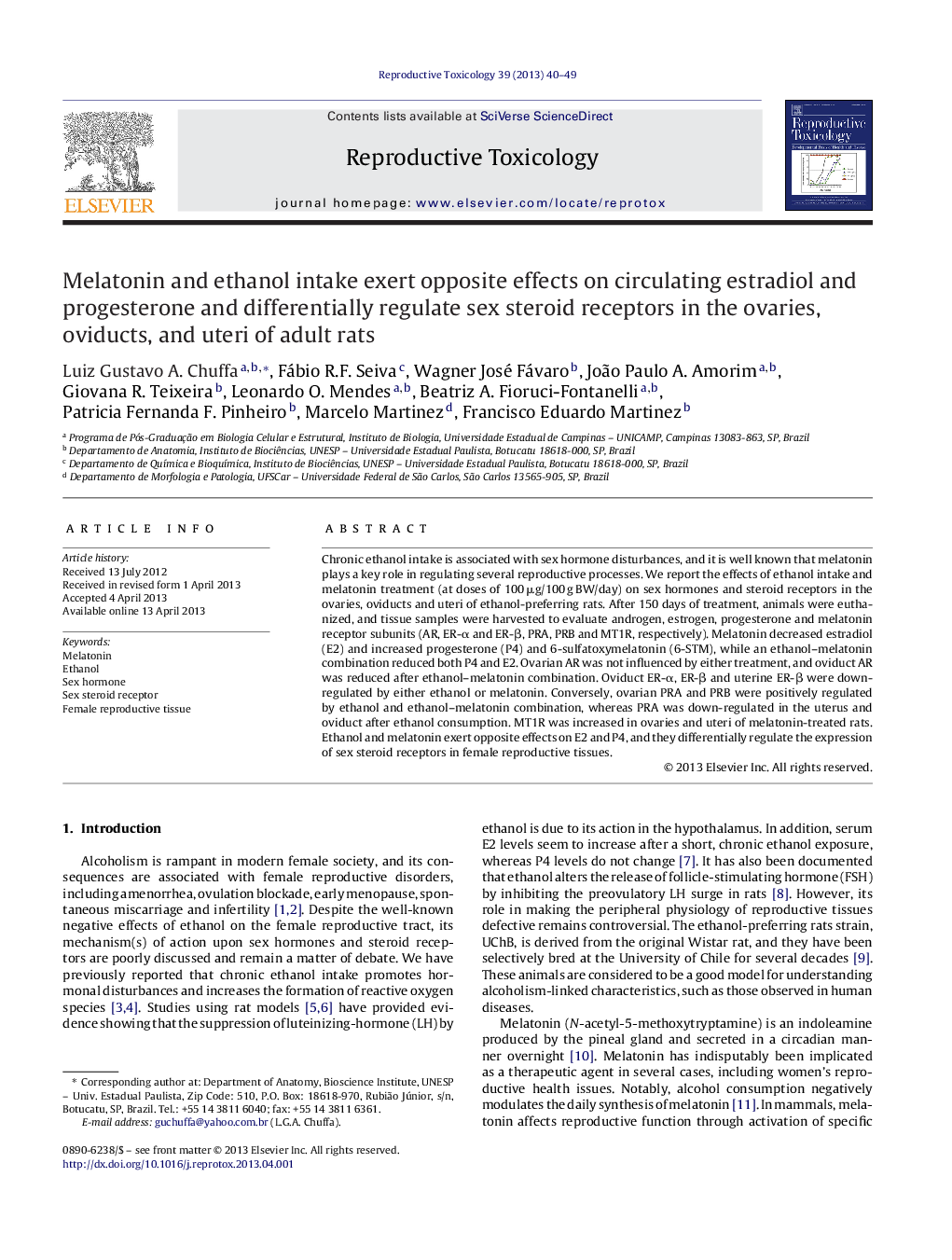| Article ID | Journal | Published Year | Pages | File Type |
|---|---|---|---|---|
| 2593612 | Reproductive Toxicology | 2013 | 10 Pages |
•Melatonin and ethanol increase circulating E2 and P4 levels but not other reproductive hormones.•Melatonin and ethanol promoted differential regulation of AR, ER and PR subunits.•MT1R was up-regulated in ovarian and uterine tissue after melatonin–ethanol combination.
Chronic ethanol intake is associated with sex hormone disturbances, and it is well known that melatonin plays a key role in regulating several reproductive processes. We report the effects of ethanol intake and melatonin treatment (at doses of 100 μg/100 g BW/day) on sex hormones and steroid receptors in the ovaries, oviducts and uteri of ethanol-preferring rats. After 150 days of treatment, animals were euthanized, and tissue samples were harvested to evaluate androgen, estrogen, progesterone and melatonin receptor subunits (AR, ER-α and ER-β, PRA, PRB and MT1R, respectively). Melatonin decreased estradiol (E2) and increased progesterone (P4) and 6-sulfatoxymelatonin (6-STM), while an ethanol–melatonin combination reduced both P4 and E2. Ovarian AR was not influenced by either treatment, and oviduct AR was reduced after ethanol–melatonin combination. Oviduct ER-α, ER-β and uterine ER-β were down-regulated by either ethanol or melatonin. Conversely, ovarian PRA and PRB were positively regulated by ethanol and ethanol–melatonin combination, whereas PRA was down-regulated in the uterus and oviduct after ethanol consumption. MT1R was increased in ovaries and uteri of melatonin-treated rats. Ethanol and melatonin exert opposite effects on E2 and P4, and they differentially regulate the expression of sex steroid receptors in female reproductive tissues.
